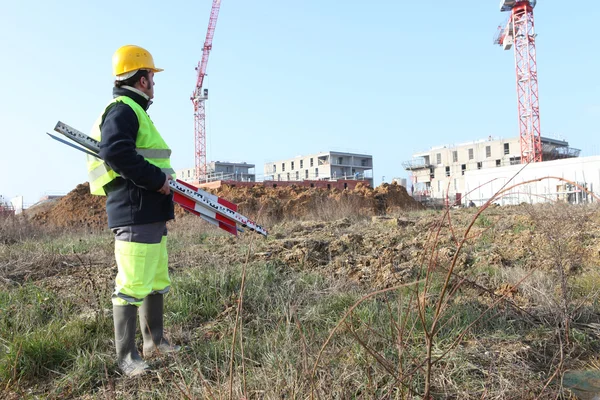Protecting Our Future: The Critical Role Of Phase 1 Environmental Site Assessments In Urban Planning
Urban development is a dynamic force that shapes the landscape of our cities, influencing everything from the local economy to the quality of life for residents. As we strive for progress, it is essential to ensure that development is not at the expense of our environment.
In the realm of urban planning, Phase 1 Environmental Site Assessments (ESAs) play a pivotal role in safeguarding our future. This article delves into the critical importance of Phase 1 ESAs in the context of urban planning, exploring how these assessments contribute to sustainable development and protect communities from environmental hazards. Click this link to explore more details.
Understanding Phase 1 Environmental Site Assessments
At its core, a Phase 1 ESA is a systematic investigation aimed at identifying potential environmental risks associated with a property. This assessment involves a thorough review of historical records, site inspections, and interviews with knowledgeable individuals. The primary objective is to determine if there are any recognized environmental conditions (RECs) on the property, which could include past contamination, hazardous waste, or other environmental liabilities.
- Historical Context: To comprehend the necessity of Phase 1 ESAs, it is crucial to understand the historical context of urban development. Many cities have a legacy of industrial activities, waste disposal, and other practices that may have left lasting environmental impacts. Before the implementation of strict environmental regulations, industries often operated without adequate consideration for the potential long-term consequences of their activities.
- Regulatory Compliance: In the modern era, regulatory frameworks demand greater accountability for environmental impacts. Phase 1 ESAs are not just a best practice; in many cases, they are a legal requirement before initiating certain types of development projects. Compliance with environmental regulations is not only ethically responsible but also financially prudent, as failure to address environmental issues can lead to costly remediation efforts or legal repercussions.

The Role of Phase 1 ESAs in Sustainable Urban Development
Preserving Environmental Quality
One of the primary goals of sustainable urban development is to preserve and enhance environmental quality. By conducting Phase 1 ESAs, urban planners can identify potential risks early in the development process. This proactive approach allows for informed decision-making, steering development away from environmentally sensitive areas and preventing further degradation of natural resources.
Mitigating Health Risks
Urban environments are home to diverse populations, and the health and well-being of residents are paramount. Contaminated sites pose health risks, ranging from respiratory issues to more severe illnesses. Phase 1 ESAs act as a shield against these risks, ensuring that new developments do not compromise the health of current and future generations.
Enhancing Resilience
In an era marked by climate change and environmental uncertainties, building resilient communities is a priority. Phase 1 ESAs contribute to resilience by identifying potential vulnerabilities and enabling planners to design developments that can withstand environmental challenges. This foresight is essential for creating cities that can adapt and thrive in the face of evolving environmental conditions.
Case Studies: Realizing the Impact of Phase 1 ESAs
To illustrate the real-world impact of Phase 1 ESAs in urban planning, let's explore a couple of case studies where these assessments played a crucial role in shaping development decisions.
Brownfield Redevelopment: The Transformation of Industrial Spaces
Many urban areas are redeveloping brownfield sites—formerly used for industrial purposes. These areas often carry a legacy of contamination, posing environmental and health risks. In a case study from a mid-sized city, a comprehensive Phase 1 ESA revealed the presence of soil and groundwater contamination on a brownfield site slated for redevelopment.

Armed with this information, urban planners were able to design remediation strategies to address the contamination effectively. The development project proceeded with confidence, knowing that potential hazards were mitigated. Today, the site stands as a shining example of successful brownfield redevelopment, providing a valuable lesson in the importance of proactive environmental assessments.
Urban Expansion and Watershed Protection
As cities expand, the potential impact on nearby watersheds becomes a concern. In a rapidly growing metropolitan area, a Phase 1 ESA played a pivotal role in assessing the environmental suitability of a proposed development near a crucial watershed. The assessment identified potential risks to water quality and aquatic ecosystems, prompting adjustments to the development plan to minimize environmental impact.
By integrating the findings of the Phase 1 ESA, the city was able to preserve the integrity of the watershed, safeguarding water resources for both the local ecosystem and the growing population. This case underscores how Phase 1 ESAs contribute to responsible urban expansion that considers the broader ecological context.
Challenges and Opportunities for Improvement
While Phase 1 ESAs have proven to be invaluable tools in urban planning, there are still challenges to address and opportunities for improvement.
- Incomplete Historical Records: One common challenge faced during Phase 1 ESAs is the availability of incomplete or inaccurate historical records. This can hinder the assessment process, potentially leading to oversights in identifying environmental risks. Improved accessibility to historical data and collaboration between public and private entities can enhance the accuracy of these assessments.
- Evolving Environmental Standards: Environmental standards and regulations are subject to change, reflecting advances in scientific understanding and societal expectations. To ensure the continued effectiveness of Phase 1 ESAs, it is essential to stay abreast of evolving environmental standards and update assessment protocols accordingly.
- Community Engagement:While Phase 1 ESAs involve a comprehensive investigation of physical aspects, the inclusion of community perspectives is equally important. Engaging with local communities ensures that the assessment process considers not only environmental factors but also the social and cultural dimensions of urban development.
The Economic Case for Phase 1 ESAs
Cost Savings through Early Detection
Identifying environmental issues early in the development process allows for cost-effective remediation. Addressing contamination at the outset is often less expensive than dealing with unforeseen problems during or after construction. Phase 1 ESAs act as a financial safeguard, helping developers avoid unexpected liabilities and ensuring that projects stay within budget.
Enhancing Property Values
Properties with a clean environmental bill of health are more attractive to investors, developers, and potential buyers. A positive Phase 1 ESA report can enhance the market value of a property, contributing to a more robust real estate market and fostering sustainable economic growth in urban areas.

